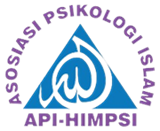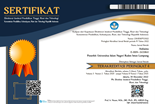Mental Health Impacts of Using Social Media Among University of Halabja Students (Kurdistan Region of Iraq)
Abstract
In the recent years, the use of social media has increased. Social media is the fastest way to reach information and make online communication. According to worldwide digital population- Internet - Statista on Jul 26, 2022, there are five billion internet users worldwide, which means 63 percent of the population in the world. This data further indicates that the male’s use of social media was higher than females. The Kurdish version of Hopkins Symptoms CheckList -25 and Perceived Stress Scale was used to assess psychological distress among university students that used social media. The questionnaire was distributed randomly among university students. Finally, 143 university students participated in the study. The prevalence of depression and anxiety was 65.03%, 62.24%, the level of stress was (M = 17.77, SD = 5.570). As a result, high levels of depression, anxiety, and stress among both females than males Halabja University students were found. This study aimed to indicate the impacts of social media on mental health among Halabja University students. The study found out that the use of social media has been making negative impacts on students’ mental health.
Keywords
Full Text:
PDFReferences
Akram, W., & Kumar, R. (2017). A Study on Positive and Negative Effects of Social Media on Society. International Journal of Computer Sciences and Engineering, 5(10), 351–354. https://doi.org/10.26438/ijcse/v5i10.351354
Alammar, A. M., & Al-garni, A. M. (n.d.). Using Social Media on Mental Health among University Medical Students in Abha City , Southern Saudi Arabia, 1–14.
Ahmed, A. A., Jafr, M. M., Hama Saeed, M. A., Ali, A. O., Mahmood, B. F., Muhammad, S. N., & Abdullah, S. A. (2022). The Impact of Social Media on the Interaction Between Students and Teachers at the University of Halabja. Journal of Philology and Educational Sciences, 1(1), 27–37. https://doi.org/10.53898/jpes2022113
Cohen, S. (1994). Perceived Stress Scale scoring and questions. Psychology, 1–3. Retrieved from http://www.mindgarden.com/products/pss.htm
Deepa, M., & Priya, V. K. (2020). IMPACT OF SOCIAL MEDIA ON MENTAL HEALTH OF STUDENTS, 9(03).
Faraj, S. M., & Jafr, M. M. (2020). The Relationship and Effect of Social Media on Student’s Academic Performance:-University of Halabja as an Example. Halabja University Journal, 5(4), 326-339.
Gholamian, B., Shahnazi, H., & Hassanzadeh, A. (2017). The prevalence of internet addiction and its association with depression, anxiety, and stress, among high-school students. International Journal of Pediatrics, 5(4), 4763–4770. https://doi.org/10.22038/ijp.2017.22516.1883
Hammad, M. A., & Alqarni, T. M. (2021). Psychosocial effects of social media on the Saudi society during the Coronavirus Disease 2019 pandemic: A cross-sectional study. PLoSONE, 16(3 March), 1–13. https://doi.org/10.1371/journal.pone.0248811
Hussein, H. H. S. (2018). The role of news media in supporting democracy in Kurdistan Region. (Doctoral thesis) Nottingham Trent University (United Kingdom).
Hussein, H. S. (2022). The Impact of Television Dramas on Women's Image In Kurdish Society. journal of Garmian University. Special issue 2. 7th Garmian Scientific Conference. (pp.79-91). (In Kurdish). https://jgu.garmian.edu.krd/article_150117.html
Ibrahim, H., Catani, C., Ismail, A. A., & Neuner, F. (2019). Dimensional structure and cultural invariance of DSM V post-traumatic stress disorder among Iraqi and Syrian displaced people. Frontiers in Psychology, 10(JULY). https://doi.org/10.3389/fpsyg.2019.01505
Kareem, F. J. (2022). A Widespread Phenomenon in Social Networks of Using Pseudonyms. The Motives and Effects of the Phenomenon on University and Institute Students in Kurdistan Region of Iraq. Journal of Kurdistani for Strategic Studies, (5): 63-82.
Karim, F., Oyewande, A., Abdalla, L. F., Chaudhry Ehsanullah, R., & Khan, S. (2020). Social Media Use and Its Connection to Mental Health: A Systematic Review. Cureus, 12(6). https://doi.org/10.7759/cureus.8627
Kolhar, M., Kazi, R. N. A., & Alameen, A. (2021). Effect of social media use on learning, social interactions, and sleep duration among university students. Saudi Journal of Biological Sciences, (xxxx). https://doi.org/10.1016/j.sjbs.2021.01.010
Malaeb, D., Salameh, P., Barbar, S., Awad, E., Haddad, C., Hallit, R., … Hallit, S. (2021). Problematic social media use and mental health (depression, anxiety, and insomnia) among Lebanese adults: Any mediating effect of stress? Perspectives in Psychiatric Care, 57(2), 539–549. https://doi.org/10.1111/ppc.12576
Overview, G. D. (2020). Траектория Педагогических Инноваций (Экономико Статистический Проект “Digital 2020”). Концепт, (3).
Pungpapong, G., & Kalayasiri, R. (2020). High Prevalence of Depression, Anxiety and Stress Among Secondary School Students During COVID-19 Lockdown and Social Distancing and Its Associated Factors: An Online Cross-Sectional Survey, 1–31. Retrieved from https://doi.org/10.21203/rs.3.rs-93848/v1
Sadagheyani, H. E., & Tatari, F. (2021). Investigating the role of social media on mental health. Mental Health and Social Inclusion, 25(1), 41–51. https://doi.org/10.1108/MHSI-06-2020-0039
Saeed, A.M., Ismael, A.N., Rasul, D.L., Majeed, R.S. and Rashid, T.A., 2022. Hate Speech Detection in Social Media for the Kurdish Language. In The International Conference on Innovations in Computing Research (pp. 253-260). Springer, Cham.
Salih, M. H., & Mohammad, A. O. (2021). Level of Mental Health among the Students of the University of Halabja. Halabja University Journal, 6(2), 128-144.
Salih, M. H., Ahmad, H. M., Mahmod, H. A., Ahmed, A. A., Abdullah, S. O., & Salih, K. W. (2022). The Anxiety Level of Students about the Future: Case of Education College of Sharazur at the University of Halabja. Journal of Philology and Educational Sciences, 1(1), 16–26. https://doi.org/10.53898/jpes2022112
Scott, E. S., & Canivet, C. (2020). Investigating the effect of social networking site use on mental health in an 18 – 34 year-old general population ; a cross- sectional study using the 2016 Scania Public Health Survey, 1–10.
Sharma, M. K., John, N., & Sahu, M. (2020). Influence of social media on mental health: a systematic review. Current Opinion in Psychiatry, 33(5), 467–475. https://doi.org/10.1097/YCO.0000000000000631
Thapa, B. (2018). A case study with students at Oulu University of Applied Sciences.
Tinghög, P., & Carstensen, J. (2010). Cross-cultural equivalence of HSCL-25 and WHO (ten) wellbeing index: Findings from a population-based survey of immigrants and non-immigrants in Sweden. Community Mental Health Journal, 46(1), 65–76. https://doi.org/10.1007/s10597-009-9227-2
Vannucci, A., Ohannessian, C. M. C., & Gagnon, S. (2019). Use of Multiple Social Media Platforms in Relation to Psychological Functioning in Emerging Adults. Emerging Adulthood, 7(6), 501–506. https://doi.org/10.1177/2167696818782309
DOI: http://dx.doi.org/10.24042/ajp.v5i2.14883
Refbacks
- There are currently no refbacks.
Copyright (c) 2022 ANFUSINA: Journal of Psychology











